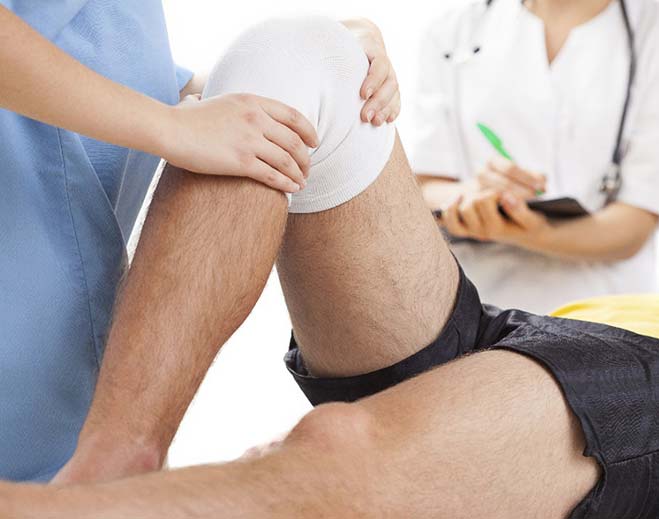Hip Replacement
If you find yourself among those needing a new hip, our surgical team at Palm Beach Gardens is equipped with the most advanced tools and technology to help you get back on your feet as soon as possible.
A traditional hip replacement usually requires making a fairly large incision over the hip joint. With a newer approach, we can often make just one or two smaller incisions for a less invasive hip replacement.
What to Expect
Before you get to the operating room, an IV (intravenous) will be started, and you may be offered medicine to help you feel less nervous. Once in the operating room, you will be moved to the operating table and put to sleep under anesthesia.
The doctor will remove the damaged parts of the hip joint and replace them with a new, prosthetic joint. The new hip joint is made up of a stem that goes into your (thighbone), the ball or head joint that fits into the stem, and a cup that is inserted
into the socket of the hip joint. The stem and cup are made of metal, but the ball may be made of metal or ceramic. The cup has a liner that may be made of plastic or ceramic.
The two most common types of artificial hip prosthetics used are cemented or uncemented. A cemented prosthesis attaches to the bone with surgical cement. An uncemented prosthesis attaches to the bone with a porous surface onto which the bone grows to
attach to the prosthesis. Sometimes, a combination of the two may be used. It’s important to talk to your doctor about each kind of prostheses and make an informed decision about the option that will provide you with the best outcome.
Cemented replacements are typically used among older, less active people or people with weak bones from osteoporosis. Uncemented replacements are typically used for younger, more active people. Studies show that both cemented and uncemented prostheses
provide fairly equal results. The biggest disadvantage of an uncemented prosthesis is a longer recovery period. It takes longer for the natural bone to grow and attach to the prosthesis. If you choose an uncemented replacement, you will have to limit
physical activity for up to three months after surgery. Thigh pain after surgery is also more common for someone with an uncemented prosthesis.
After Surgery
After surgery, you will be assisted in getting up to walk fairly soon. It is important to begin moving the new joint after surgery. Your pain will be controlled with medication, and our physical therapy team will work closely with you and your surgeon
to plan an exercise and rehabilitation program for you. You will likely be in the hospital for a few days.
We will help arrange a continuous plan of physical therapy through our rehabilitation program. Once you are discharged, you will make multiple visits until you regain muscle strength and full range of motion. Once you return home, plan to have someone
there to help you around the house for a week or two. While we want you up and moving, doing too much after surgery could lead to complications or prolonged healing. You should not drive without receiving approval from your doctor. Keep in mind that
full recovery from the surgery may take several months.
Preventing Falls
It is important to avoid falls after your hip replacement surgery. A fall could damage your new joint. Your therapist may recommend a cane or walker to help you get around until your strength and balance improve.
You may also be instructed to make some temporary modifications to your home during your recovery, including:
- Installing handrails along stairs, in the shower or bath
- Using a bench or chair in the shower
- Raising the toilet seat
- Removing rugs, carpets and loose electrical cords that may cause you to trip






